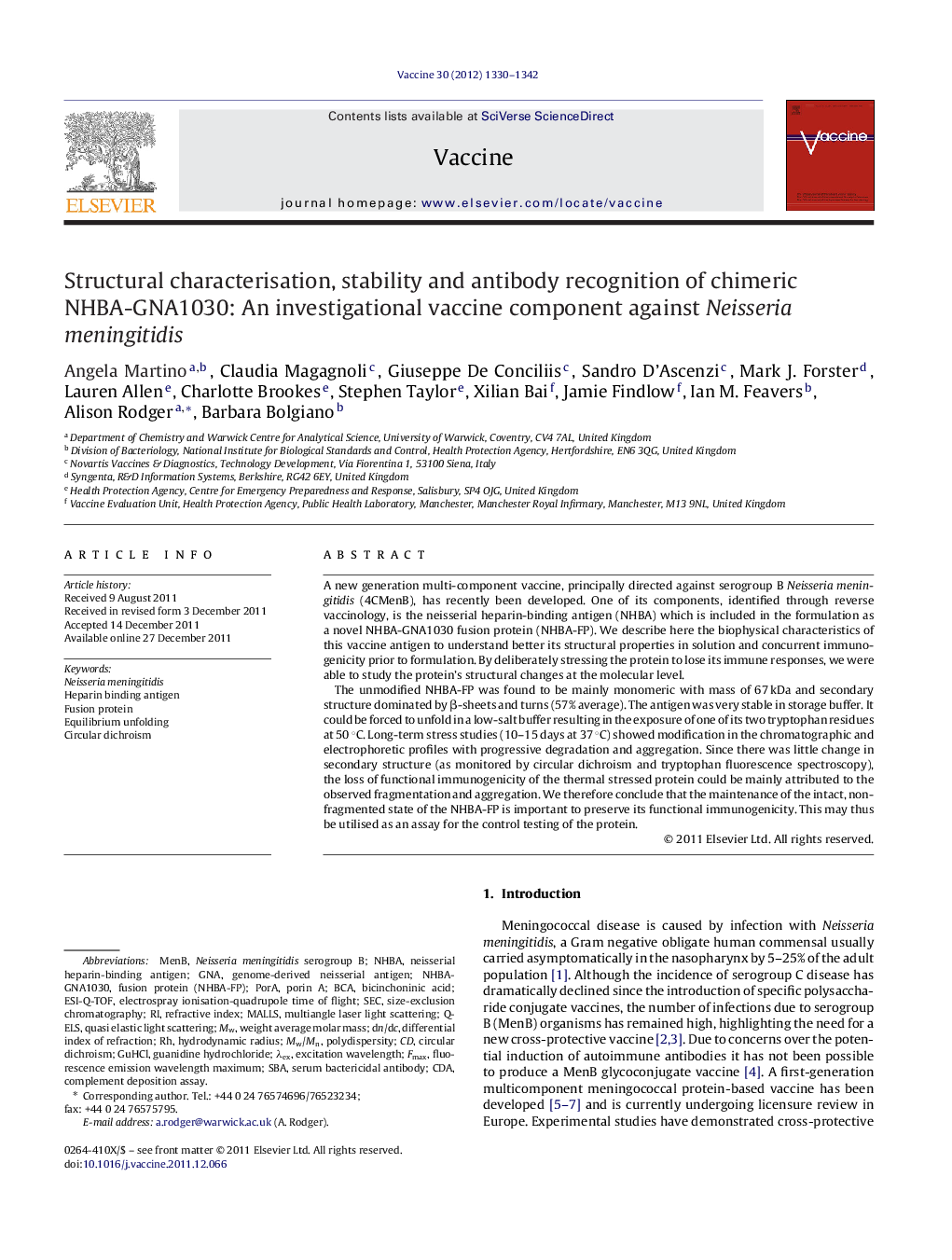| Article ID | Journal | Published Year | Pages | File Type |
|---|---|---|---|---|
| 2404478 | Vaccine | 2012 | 13 Pages |
A new generation multi-component vaccine, principally directed against serogroup B Neisseria meningitidis (4CMenB), has recently been developed. One of its components, identified through reverse vaccinology, is the neisserial heparin-binding antigen (NHBA) which is included in the formulation as a novel NHBA-GNA1030 fusion protein (NHBA-FP). We describe here the biophysical characteristics of this vaccine antigen to understand better its structural properties in solution and concurrent immunogenicity prior to formulation. By deliberately stressing the protein to lose its immune responses, we were able to study the protein's structural changes at the molecular level.The unmodified NHBA-FP was found to be mainly monomeric with mass of 67 kDa and secondary structure dominated by β-sheets and turns (57% average). The antigen was very stable in storage buffer. It could be forced to unfold in a low-salt buffer resulting in the exposure of one of its two tryptophan residues at 50 °C. Long-term stress studies (10–15 days at 37 °C) showed modification in the chromatographic and electrophoretic profiles with progressive degradation and aggregation. Since there was little change in secondary structure (as monitored by circular dichroism and tryptophan fluorescence spectroscopy), the loss of functional immunogenicity of the thermal stressed protein could be mainly attributed to the observed fragmentation and aggregation. We therefore conclude that the maintenance of the intact, non-fragmented state of the NHBA-FP is important to preserve its functional immunogenicity. This may thus be utilised as an assay for the control testing of the protein.
► We describe the biophysical characteristics of the NHBA-GNA1030 vaccine antigen. ► The fusion protein has folded structure in the NHBA C-terminal domain and in GNA1030. ► Thermal stress causes little change in protein secondary structure. ► Exposure at 37 °C for up to 15 days results in protein degradation and aggregation. ► Maintenance of the intact, non-fragmented state preserves functional immunogenicity.
